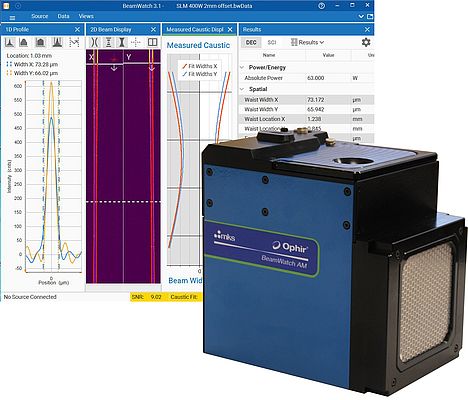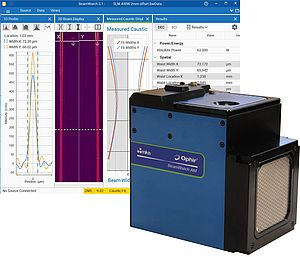Ophir distributes the Ophir BeamWatch AM, the industry's first non-contact laser beam monitoring system for additive manufacturing. BeamWatch is a lightweight, compact system designed for real-time measurement of focal shift during laser startup of powder bed fusion manufacturing processes. It measures key beam size, position, and quality parameters, including focus spot size and beam caustic. These measurements allow users to more easily determine when the beam is aligned and in focus, providing more consistent metallurgy. Measurements can be displayed as tabular, 2D, and 3D views, providing a quick and realistic display of laser characteristics.
Understanding the beam
"Additive manufacturing processes, such as Selective Laser Sintering (SLS) and Selective Laser Melting (SLM), require symmetrical, uniform, and stable power density distribution of the laser beam," said Gary Wagner, General Manager, Ophir Photonics (U.S.). "This requires a beam spot size and intensity that is maintained within a finite acceptance window when delivered to the material that is to be transformed. Users need to understand where the system laser beam is focusing, if the focus is stable, and, if not, where focus occurs after the system has thermally stabilized in order to avoid structural weakness, captured stress, and voids in the AM build. BeamWatch AM solves these problems by providing real-time measurement of the beam at the working plane location."
Measuring rates up to 14 Hz
BeamWatch AM is the next generation of the company's laser beam monitoring systems, all of which use Rayleigh scatter to image the beam without contacting the laser. This removes the potential for damage to the laser and speeds the measurement process by up to two minutes. BeamWatch AM can measure laser powers to 1000 watts in-situ at rates up to 14Hz and can handle up to 120,000 joules without cooling. System measurements include laser power, waist width, waist location, focal plane location, spot size at focus, spot size at any point along the 10mm measurement space, ellipticity, Rayleigh length, M2, K, BPP, divergence, and centroid beam tilt. Results can be charted and exported to .csv files for importing into Excel or other analysis software.


















